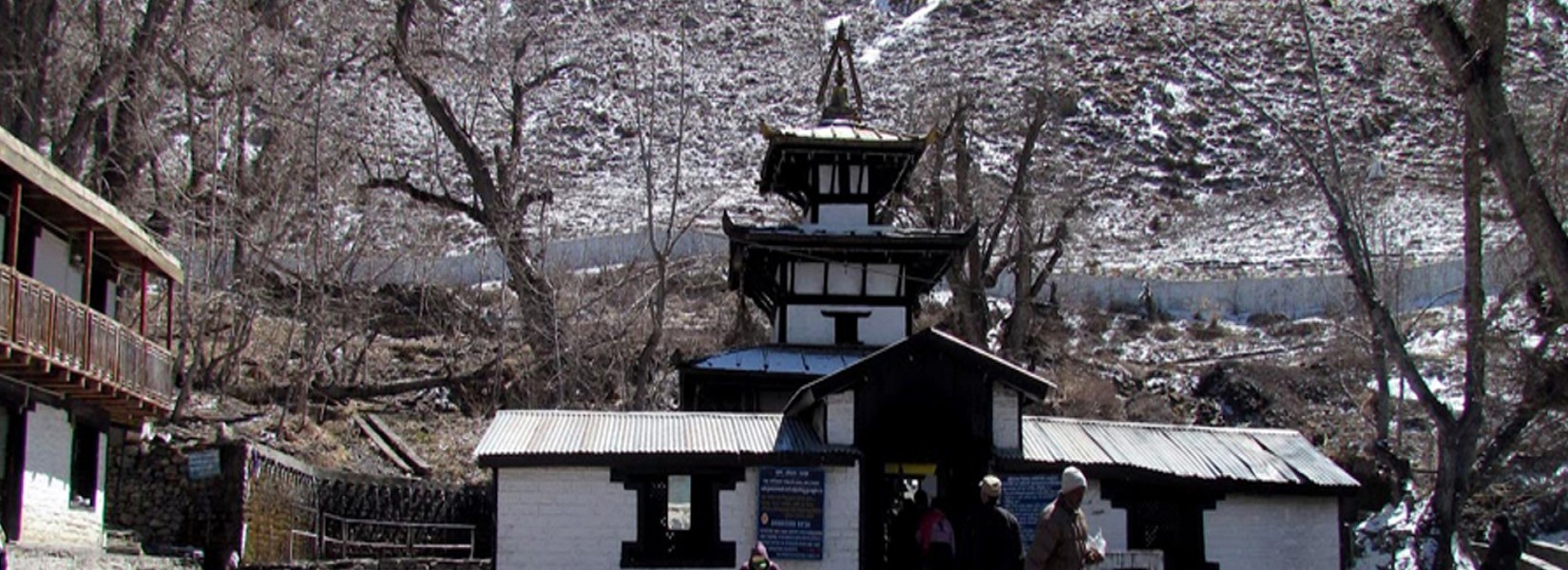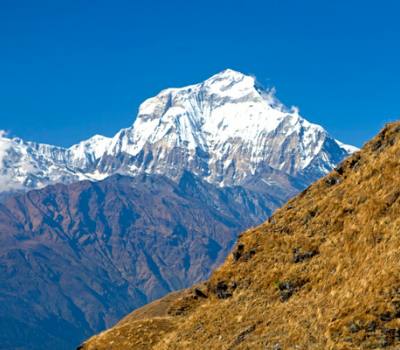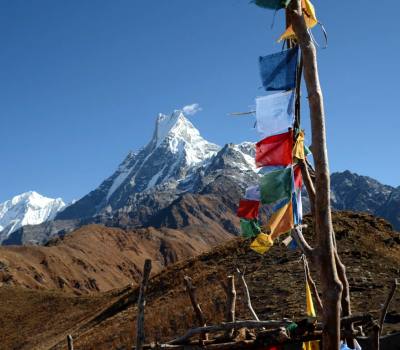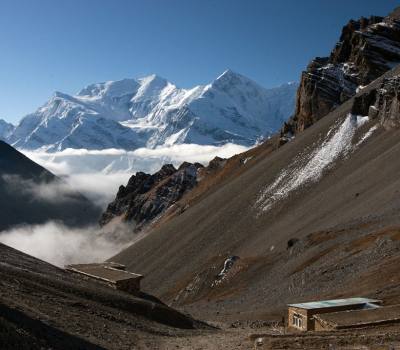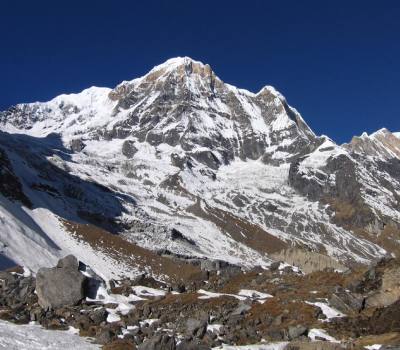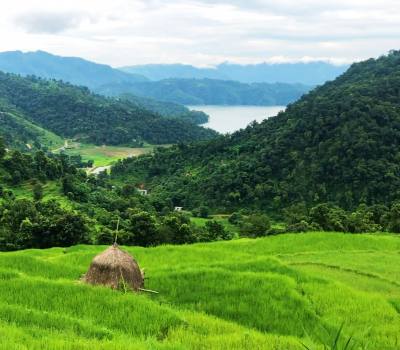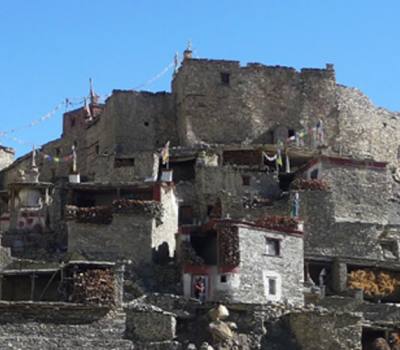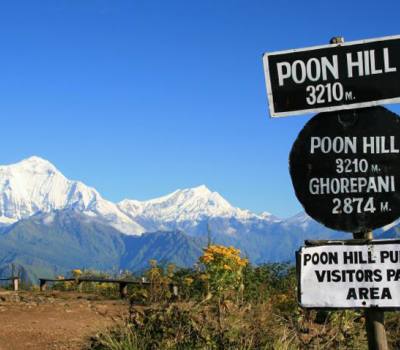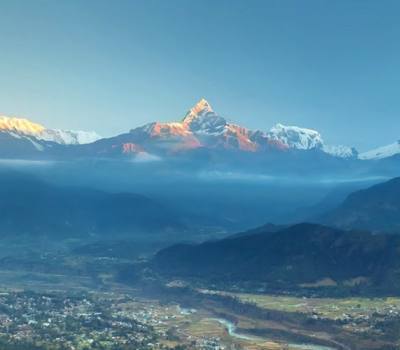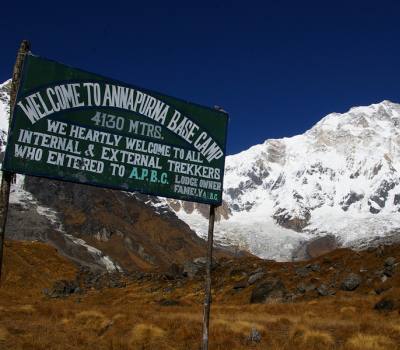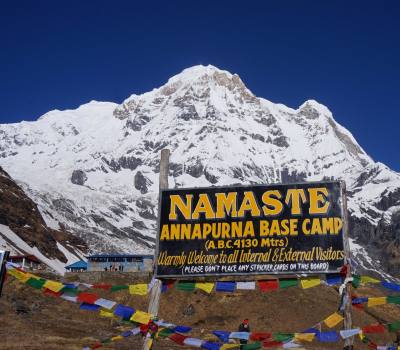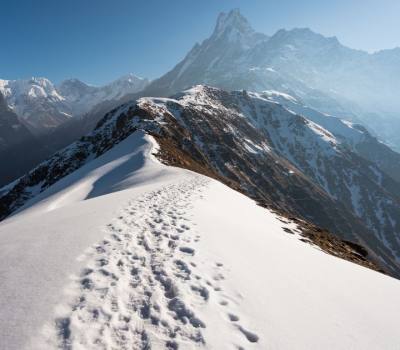Jomsom Muktinath Trekking
Jomsom Muktinath Trekking is definitely a great way to spend your holidays and it also gives you so much insight into the place you’re traversing through. This is what the Jomsom Muktinath exactly does. A package of the perfect amount of stunning landscapes and ancient cultures and traditions, this trek is definitely something to look out for. We take you through a few of the most sought out destinations among tourists, such as the vibrant Lake city of Pokhara, the hot springs of Tatopani, the apple fields of Marpha, the stunning landscapes of Kagbeni and the 108 spouts temple of Muktinath.
Like most of the treks, we begin at the city of Pokhara, which is perfect to unwind ourselves and prepare for the trek. We begin with a drive to Nayapul, and the trek commences onto several villages, Whitewater Rivers, suspension bridges, rhododendron forests, oak forests, obviously with the staggering Himalayan scene surrounding us. Explore and indulge in the cultural haven of the Tibetan monasteries with their prayer wheels and flags and if you dare, cleanse and atone your sins at the 108 water spouts at the Muktinath temple.
The perfect months to trek the Jomsom and the Muktinath are October to November and the final weeks of February since the weather during these months aren’t intense. Our team of experts will assure you with their perfect guidance, as they take you through the most amazing trails and picturesque spots that will be memorable throughout your life.
Trip Highlights of Jomsom Muktinath Trekking
The Jomsom Muktinath Trek combined with Poon Hill is a beautiful and diverse trek in the Annapurna region of Nepal, offering stunning views, cultural experiences, and a mix of landscapes. Here are the highlights of this trekking adventure:
Trekking Highlights
-
Scenic Flight to Jomsom:
- Enjoy a breathtaking flight to Jomsom, providing stunning aerial views of the Annapurna and Dhaulagiri ranges.
-
Muktinath Temple:
- Visit the sacred Muktinath Temple, a pilgrimage site for both Hindus and Buddhists, famous for its eternal flame and 108 water spouts.
-
Kagbeni Village:
- Explore Kagbeni, a charming village with ancient monasteries, traditional houses, and a unique blend of Tibetan and Nepalese culture.
-
Poon Hill Viewpoint:
- Experience a spectacular sunrise view from Poon Hill, with panoramic vistas of Annapurna, Dhaulagiri, Nilgiri, and Machapuchare (Fishtail) mountains.
Cultural Highlights
-
Thakali Culture:
- Discover the rich culture of the Thakali people in Jomsom and surrounding villages, known for their hospitality and delicious cuisine.
-
Marpha Village:
- Visit the picturesque village of Marpha, renowned for its apple orchards, traditional whitewashed houses, and narrow stone-paved alleys.
-
Gurung Culture:
- Immerse yourself in the culture of the Gurung people in Ghorepani and surrounding villages, experiencing their traditional lifestyle and warm hospitality.
Natural Highlights
-
Kali Gandaki Gorge:
- Trek through the world's deepest gorge, Kali Gandaki, flanked by the towering peaks of Annapurna and Dhaulagiri.
-
Diverse Landscapes:
- Experience a variety of landscapes, from the arid, wind-swept terrain of the Mustang region to the lush, rhododendron-filled forests of the Annapurna foothills.
-
Hot Springs in Tatopani:
- Relax in the natural hot springs of Tatopani, a soothing break during the trek.
Adventure Highlights
-
Moderate Trekking Challenge:
- Enjoy a trek that offers a moderate level of challenge, suitable for trekkers with average fitness levels.
-
Varied Terrain:
- Traverse a range of terrains, including rocky trails, lush forests, and high-altitude deserts, keeping the trek exciting and varied.
Personal Achievements
-
Pilgrimage Experience:
- Achieve a sense of spiritual fulfillment by visiting the sacred Muktinath Temple, a site revered by both Hindus and Buddhists.
-
Photographic Opportunities:
- Capture stunning photographs of the Himalayan peaks, traditional villages, and vibrant landscapes.
-
Cultural Exchange:
- Engage with local communities, learning about their traditions, lifestyles, and stories.
Practical Highlights
-
Accessibility:
- The trek is easily accessible with a flight to Jomsom and a drive to Nayapul, the starting points of the trek.
-
Teahouse Accommodation:
- Stay in comfortable teahouses along the trekking route, enjoying warm hospitality and delicious local meals.
-
Flexible Itinerary:
- The trek offers a flexible itinerary, allowing for adjustments based on your pace and preferences.
This combination of natural beauty, cultural richness, and moderate adventure makes the Jomsom Muktinath Trek with Poon Hill a highly rewarding experience for trekkers of all backgrounds.
Outline Itinerary:
- Day 01: Arrival in Kathmandu (1,350m)
- Day 02: Kathmandu: sightseeing and trek preparation
- Day 03: Fly to Pokhara (823m) and trek to Tikhedhunga (1,552m): 30 minutes flight, 4-5 hours trek
- Day 04: Tikhedhunga to Ghorepani (2,750m): 6-7 hours
- Day 05: Ghorepani to Tatopani (1,190m): 5-6 hours
- Day 06: Tatopani to Kagbeni (2804): 5-6 hours by Driving
- Day 07: Kagbeni to Muktinath (3,710m): 5-6 hours
- Day 08: Muktinath to Jomsom (2,715m): 5-6 hours
- Day 09: Fly back to Pokhara: 20 minutes flight
- Day 10: Drive/fly from Pokhara to Kathmandu
- Day 11: Final departure
Detail Itinerary
- Day 01 :Arrival in Kathmandu (1,350m) Leave everything at the hands of our representatives upon your arrival, who will take the trouble from this point on. Loosen up and unwind yourself after the tiring flight.
- Day 02 :Kathmandu: sightseeing and trek preparation Spend the day as you wish, by prepping and doing some final shopping for the trek. Upon your demand, we can likewise sort out a short visit for you to explore the ancient monuments of Kathmandu. Kathmandu Durbar Square and Swoyambhunath stupa such a historic monuments are in a city and we can go for visiting these places.
- Day 03 :Fly to Pokhara (823m) and trek to Tikhedhunga (1,552m): 30 minutes flight, 4-5 hours trek Today, we embark on our trek. We board a 35-minute flight amidst the snowcapped mountains to get to Pokhara. We begin our trek with a rough 2-hour ride to Nayapul. Upon getting at Nayapul, brace yourselves for the 4-5 hour trek to Tikhedunga which takes us through the calm and serene river's valley along with pristine waterfalls and forest.
- Day 04 :Tikhedhunga to Ghorepani (2,750m): 6-7 hours Another trail awaits to be overcome. The trek to Ghorepani is going to be calm and serenading through cascading rivers and picturesque fields. In the blink of an eye, we get to Ghorepani, where we spend the night.
- Day 05 :Ghorepani to Tatopani (1,190m): 5-6 hours A quick stop at the Poonhill to catch the sunrise will definitely be worth it. Absorb the beauty and calmness of the sun as it rises and majestically. After enjoying the sunrise, we make our way through several trails. Eventually, when we get to Tatopani, we take a dip in the hot water spring to relax our muscles after the tedious trek.
- Day 06 :Tatopani to Kagbeni (2804): 5-6 hours by Driving Early in the morning, we start on our Drive to Kagbeni. As we walk right next to the white waters of the Kali Gandaki, we experience nature at its finest. Yet another wobbly suspension bridge over the strong currents of the river which brings us to the wonderful waterfall, Rupse Chhahara. Over night at Kagbeni
- Day 07 :Kagbeni to Muktinath (3,710m): 5-6 hours Today, we collect our permits and land upon the banks of the Kaligandaki. Come across the finest of landscapes and take time to admire these beauties. After 5-6 hours of trekking, we get to Muktinath, which is home to one of the most significant Hindu temples in Nepal.
- Day 08 :Muktinath to Jomsom (2,715m): 5-6 hours Today, we visit the important pilgrimage site of Muktinath which bears great significance for the Hindus and Buddhists. A quick trip to the temple will give us plenty of insights of the culture of Nepal. We then make our way back to Jomsom, while we enjoy the stunning landscapes.
- Day 09 :Fly back to Pokhara: 20 minutes flight All good things come to an end and so has our trek. We make our way to the tiny airstrip of Jomsom and fly back to the vibrant Lake city of Pokhara.
- Day 10 :Drive/fly from Pokhara to Kathmandu Today, we advance back to Kathmandu. We can either, hop on a bus which takes us 6 hours to get to Kathmandu or board a 30-minute flight to Kathmandu and catch final glimpses of the Himalayas.
- Day 11 :Final departure Time has come to say farewell to Nepal and all the brilliant recollections. We trust you have a safe flight and we are quick to go on another trek with you, as of now.
Cost Includes
- Airport pick-up and drop-off private transfer
- Drop to Nayapul and Pick up from Nayapul by Private Van
- Hotel in Pokhara and Kathmandu. Category 2-3 star
- Farewell Dinner by Company
- Trekking Accommodation, Twin Sharing in Basic Tea-house
- English-speaking guides/ Who has excellent knowledge.
- Porters for 2 guest one porter
- All meals( Breakfast, Lunch & Dinner) with tea and coffee
- Fresh Fruits after dinner every evening.
- Transportation to and from the trail head
- All necessary documents and permits for trekking
- Trekking equipment including sleeping bags
- Staff insurance, medication and equipment
- All Govt. and Local Taxes, First Aid Kit
- Trekking Certificate by Destination Unlimited.
Cost Excludes
- International airfares, Kathmandu sightseeing and entrance fees
- Travel/trekking insurance/ Nepal entry visa fees
- Mountain rescue charges or insurance
- Bottled drinks on trek (cold and alcoholic) and hot drinks
- Lunches and dinners in Kathmandu and Pokhara
- Additional food or drink on trek in addition to three standard meals
- Personal expenses, Emergency Expenses, road blocked, snakes, desert.etc
- Which is not mention in email
- Tips(Tipping are expected)
Q: What is the best time to do the Jomsom Muktinath Trek with Poon Hill? A: The best times are during the pre-monsoon (March to May) and post-monsoon (September to November) seasons. These periods offer stable weather, clear skies, and pleasant temperatures ideal for trekking.
Q: How difficult is the Jomsom Muktinath Trek with Poon Hill? A: This trek is considered moderate. It involves walking for 5-7 hours a day at altitudes ranging from 800m to 3,800m. Good physical fitness is recommended, but no prior trekking experience is necessary.
Preparation and Training
Q: What kind of physical preparation is required? A: Regular cardio exercises such as walking, running, swimming, or cycling, combined with strength training, are recommended. Begin your training at least 2-3 months before the trek to build stamina and endurance.
Q: Do I need prior trekking experience? A: No prior trekking experience is necessary, but it can be helpful. The trek is suitable for beginners with good fitness levels.
Gear and Equipment
Q: What gear is needed for the trek? A: Essential trekking gear includes:
- Sturdy trekking boots
- Warm clothing (layers, down jacket)
- Sleeping bag (rated for -10°C/14°F)
- Trekking poles
- Backpack
- Headlamp
Most gear can be rented or purchased in Kathmandu or Pokhara.
Q: Are there any gear shops along the trek? A: Yes, you can find basic trekking supplies in Jomsom and Ghorepani, but it’s best to get your gear in Kathmandu or Pokhara, where there are more options and better prices.
Health and Safety
Q: How do I deal with altitude sickness? A: Proper acclimatization is crucial. Follow a gradual ascent, stay hydrated, and avoid alcohol. Familiarize yourself with the symptoms of altitude sickness and descend if symptoms worsen. Carry medications like Diamox, but consult your doctor before taking them.
Q: What medical facilities are available on the trek? A: There are small clinics in Jomsom and Muktinath. In case of severe altitude sickness or other medical emergencies, evacuation by helicopter is possible. Ensure you have comprehensive travel insurance that covers high-altitude trekking and emergency evacuation.
Logistics and Accommodation
Q: What kind of accommodation is available during the trek? A: Accommodation along the trekking route typically consists of teahouses, which provide basic facilities, including a bed, shared bathrooms, and meals. In Kathmandu and Pokhara, you'll stay in hotels with more amenities.
Q: What kind of food is available on the trek? A: Teahouses offer a variety of meals, including traditional Nepali dishes like dal bhat (lentil soup with rice), as well as pasta, noodles, soups, and more. While the food is basic, it is generally nutritious and provides the necessary energy for trekking.
Q: How do I handle drinking water? A: Bottled water is available for purchase, but to reduce plastic waste, it’s recommended to use water purification tablets or a water filter. Boiled water is also available at teahouses.
Permits and Costs
Q: What permits are required for the trek? A: You will need the following permits:
- Annapurna Conservation Area Permit (ACAP)
- TIMS (Trekkers' Information Management System) card
Your trekking company usually arranges these permits.
Q: What is the cost of the Jomsom Muktinath Trek with Poon Hill? A: The cost can vary based on the trekking company, the level of service, and the duration of the trek. Generally, it ranges from $1,200 to $2,000 per person, which typically includes permits, domestic flights, guides, porters, accommodation, and meals.
Miscellaneous
Q: Is tipping expected? A: Yes, tipping is customary in Nepal. It is appreciated to tip guides and porters at the end of the trek. The amount can vary, but a general guideline is to tip around 10% of the total trip cost, distributed among the support staff.
Q: Is there internet access on the trek? A: Yes, internet access is available at most teahouses along the route, but the speed and reliability can vary. Some places charge a fee for Wi-Fi usage.
Q: What kind of insurance do I need? A: Ensure you have travel insurance that covers high-altitude trekking, including emergency evacuation. Verify that the policy covers altitudes above 3,800 meters for the Muktinath and Poon Hill sections.
Q: Are there any cultural considerations to be aware of? A: Yes, be respectful of local customs and traditions. Dress modestly, especially when visiting religious sites like Muktinath Temple. Always ask for permission before taking photographs of people.
Trip Map
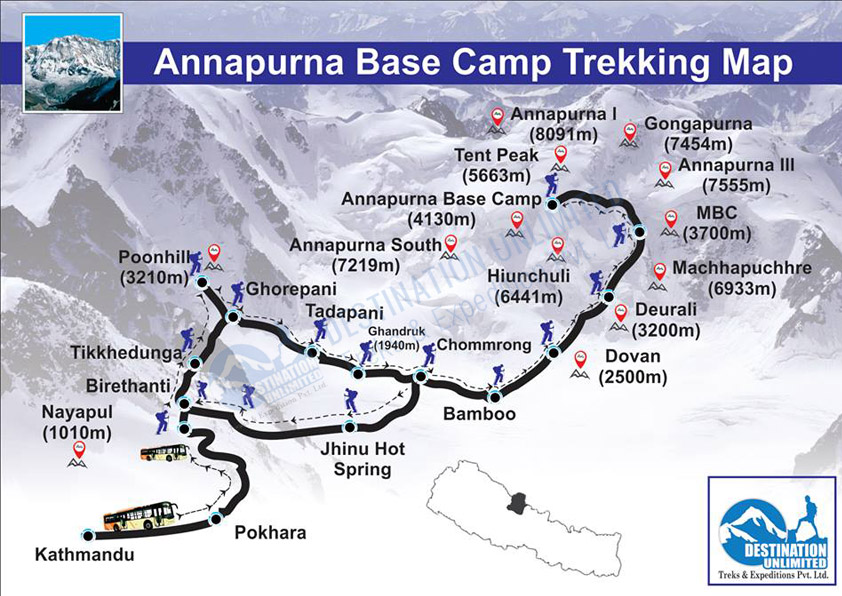
Quick Enquiry
Key Information
-
Trip Cost US$ 780
-
Trip Duration 11 Days
-
Destination Nepal
-
Trip Difficulty Moderate
-
Trip Style Trekking
-
Accomodation Hotel + Lodges
-
Max Altitude 3710m
| No of people | Price P.P |
| 1-1 Pax | US$ 780 |
| 2-4 | US$ 665 |
| 6-8 | US$ 650 |
| 10-12 | US$ 610 |
Similar Trips
-
Khorpa Danda Trek Annapurna Dhaulagiri Community Trek
DURATION: 15 Days -
Mardi Himal Trek
DURATION: 11 Days -
Annapurna Circuit Trek cost
DURATION: 19 Days -
Short Annapurna Base Camp
DURATION: 10 Days -
Royal Trek
DURATION: 9 Days -
Nar Phu Valley Trek
DURATION: 19 Days -
Ghorepani Poon Hill Trek cost
DURATION: 10 Days -
Dhampus Sarangkot Trek
DURATION: 8 Days -
Annapurna Base Camp Trek
DURATION: 15 Days -
Annapurna Base Camp trek 6 days cost
DURATION: 6 Days -
Mardi Himal Trek 5 days cost
DURATION: 5 Days

